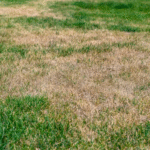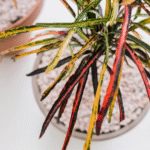Gaura, also known as wandflower, is a graceful and delicate-looking plant that adds a soft, flowing beauty to gardens. Its tall, thin stems hold small flowers that flutter in the breeze like butterflies. The flowers come in shades of white, pink, or light purple, and they bloom from late spring to fall. The plant’s full name is Gaura lindheimeri, though it is now sometimes listed as Oenothera lindheimeri. Gardeners love gaura because it is low-maintenance, drought-tolerant, and blooms for a long time.
Even though the flowers look delicate, gaura is a strong and hardy plant. It grows well in hot and dry climates, making it a great choice for gardeners looking for beauty without a lot of work. In this article, we’ll explain how to grow and care for gaura in easy steps.
What Makes Gaura Special
Gaura has a light and airy look. Its long, slender stems wave gently in the wind, and the small flowers open in groups, giving the plant a floating effect. The plant has a bushy base and grows upright, often reaching 2 to 4 feet tall. Some varieties stay shorter, which makes them good for containers or borders.
One of the best things about gaura is its long bloom time. While many flowers bloom for just a few weeks, gaura can bloom from late spring all the way to the first frost. This gives your garden color and motion for months.
Choosing the Right Location
Gaura loves the sun. It grows best in full sun, which means it needs at least 6 hours of direct sunlight each day. The more sun it gets, the more flowers it will produce. If you plant it in a spot with too much shade, it may grow tall and weak, with fewer blooms.
Good airflow is also important. This helps prevent diseases and keeps the plant strong. Choose an open area in your garden where the plant has space to move in the breeze.
Soil Requirements
Gaura is not picky about soil, but it needs soil that drains well. It does not like wet or soggy roots. In fact, gaura is very drought-tolerant once it’s established. Sandy or loamy soil is best. If your soil is heavy or has a lot of clay, you can improve drainage by mixing in sand, compost, or small stones.
Gaura prefers slightly acidic to neutral soil, but it can still grow in slightly alkaline soil. The key is to make sure the soil doesn’t stay wet after rain or watering.
Planting Gaura
You can plant gaura in the spring after the last frost. Dig a hole a little wider than the root ball of the plant. Set the plant in the hole so the top of the root ball is level with the soil surface. Gently fill the hole with soil and press it down to remove air pockets. Water well after planting.
If you’re planting more than one gaura plant, leave 12 to 18 inches of space between them. This gives them room to grow and helps air flow between the plants.
Watering Tips
When gaura is first planted, water it regularly to help it get established. Once the plant starts growing well, you can reduce how often you water. Gaura is very drought-resistant and can go without water for days or even weeks once it has deep roots.
Water the plant at the base instead of over the leaves to prevent disease. In hot, dry weather, check the soil. If the top inch is dry, it’s time to water. Be careful not to overwater, as gaura does not like soggy soil.
Fertilizing
Gaura does not need much fertilizer. In fact, too much fertilizer can cause the plant to grow too tall and floppy. If your soil is poor, you can add a small amount of balanced fertilizer in early spring to help it get started. Otherwise, gaura will do fine with the nutrients already in the soil.
Compost or organic mulch can also help improve soil quality without overfeeding the plant. Avoid high-nitrogen fertilizers, which can lead to lots of leaves and fewer flowers.
Pruning and Deadheading
Gaura blooms for a long time, and while it’s not necessary, deadheading (removing spent flowers) can help keep the plant tidy. You can pinch off or snip the faded flower spikes to encourage more blooms. Some gardeners leave the flowers on for a wild, natural look.
In midsummer, if the plant starts to look messy or falls over, you can cut it back by about one-third. This will make the plant bushier and help it keep blooming. In late fall or early spring, you can cut the whole plant back to a few inches above the ground to make room for new growth.
Propagation: Growing More Gaura Plants
Gaura can be grown from seed, division, or cuttings. Growing from seed takes longer but is possible if you collect the seeds after flowering. The easiest method for home gardeners is division.
To divide gaura, dig up the plant in early spring or fall. Gently separate the roots into two or more sections, making sure each part has some roots and stems. Replant each section in a new spot and water well.
You can also take stem cuttings in spring or early summer. Cut a healthy stem, remove the lower leaves, and place it in moist soil or water until roots grow. Then plant it in the garden.
Common Problems and Pests
Gaura is a tough plant and is usually not bothered by pests. However, in some areas, aphids or spider mites may appear. You can wash them off with a spray of water or use insecticidal soap if needed.
The most common problems come from too much water or poor drainage. Root rot can happen if the soil stays wet. Make sure your gaura is planted in well-draining soil and avoid watering too often.
In humid weather, powdery mildew can form on the leaves. To prevent this, plant gaura where it gets good air circulation and avoid wetting the leaves when you water.
Best Companions for Gaura
Gaura looks great with many other garden plants. It pairs well with flowers like coneflowers, black-eyed Susans, lavender, salvia, and ornamental grasses. Because of its airy shape, gaura works well as a filler plant between more solid or bold plants.
It also fits nicely in wildflower gardens, prairie-style plantings, and cottage gardens. You can plant it in borders, beds, or even containers, as long as they are deep and drain well.
Is Gaura Deer-Resistant?
Yes, gaura is usually deer-resistant. The leaves have a slightly rough texture and are not very tasty to deer. While no plant is completely safe from hungry animals, gaura is not a favorite snack and is often left alone.
Winter Care
In colder zones, gaura may die back in winter but will return in spring. In USDA zones 5 to 9, gaura is usually hardy and doesn’t need special care. In colder areas, you can protect the roots with a layer of mulch to help it survive the winter.
If you’re growing gaura in a pot, move it to a sheltered spot during freezing weather, or bring it indoors if possible. Just be sure it still gets light and the soil doesn’t stay wet.
Final Thoughts
Gaura is a beautiful and easy plant that brings movement and color to the garden. With its long-lasting flowers and soft, floating look, it adds a natural, wild touch to flower beds, borders, and containers. Best of all, it doesn’t ask for much. Just give it sun, well-draining soil, and a little water, and it will bloom for months.
Whether you are an experienced gardener or just starting out, gaura is a wonderful choice for adding beauty with very little effort. It’s proof that even the most delicate-looking plants can be some of the strongest and easiest to care for.







Leave a Reply